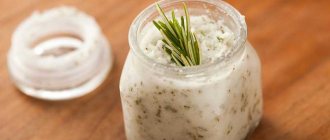Butter is a tasty product needed for baking and cooking. It can be stored for several weeks in the refrigerator. However, if you stocked up on oil during a big sale at your grocery store or go on an extended vacation, you may end up with excess oil that will spoil before you can use it. Don't worry because the butter is very easy to freeze. Find out what other foods can be stored in the freezer
- To freeze butter, wrap it tightly in aluminum foil, plastic wrap, or place it in a zip-top freezer bag.
- Frozen salted butter will remain best quality for up to 12 months, unsalted butter will remain best quality for about 6 months.
- To quickly defrost frozen butter, microwave in short (10-second) intervals on low until softened. Or grate frozen butter using the large holes of a cheese grater so it melts quickly.
- If you're not in a hurry, you can defrost frozen butter in the refrigerator - this will take about 6-7 hours. You can also immerse the butter (in a tightly sealed plastic bag) in cold water - it will thaw in about half an hour to an hour.
Can butter be stored in the freezer?
100 g of natural butter contains:
- fat - 72.5–82.5 g;
- proteins and carbohydrates - about 1 g.
Mineral composition: selenium, phosphorus, magnesium, calcium, sodium, zinc, potassium. Vitamins: A, B2, B4, B12, D, E, K.
In order to preserve the benefits of the product for a long time, it is important to create optimal conditions for it. At a temperature of -24...-18°C, the properties of salted butter are preserved for a whole year, at -12°C - for 9 months. For unsalted, the values are reduced to 5 and 3 months, respectively.
How can you tell if a product has gone bad?
It is very easy to notice that the oil has begun to deteriorate:
- First, the color will change (the product will turn yellow).
- Then the oil will develop a characteristic unpleasant damp smell.
- The oil will have a bitter taste and an unpleasant aftertaste.
Spoiled oil should never be eaten , since as a result of oxidation processes, pathogenic bacteria have proliferated in it. Eating such a product guarantees you serious poisoning.
Is it permissible to reanimate what has been damaged?
Of course, it is best to immediately throw a spoiled product in the trash. However, there are situations in which it becomes necessary to reanimate spoiled oil. There are several ways to help give lost oil a second life:
- If the oil bar turns yellow due to improper storage, you can carefully cut off the discolored parts with a knife. This advice will only work if a change in color is the only sign of spoilage of the product. After cutting off the yellowed layer, you need to change the principles of storing butter.
- The spoiled product can be melted. Such a product can even be used for cooking in the future.
- The easiest way is to rinse the bar with plain water, then salt it and mix it with a small amount of carrot juice.
- A baking soda solution may also help. First, the oil bar must be treated with a mixture of 1 teaspoon of soda dissolved in a glass of clean water. The product is then washed and salted.
- Stale butter can be mashed in milk. Then the product must be rinsed under running water.
Such a universal and nutritious product as butter is in every housewife's refrigerator. However, in order for it to give all its benefits and delicate taste, it must be stored correctly. There are many rules for storing butter, which you should never forget about if you do not want to expose yourself and your loved ones to severe food poisoning.
Storage methods
The product is kept for up to 20 days in the refrigerator in a butter dish with a tight lid, 21 days in foil, 10 days in parchment, for the period specified by the manufacturer in the original packaging.
Advice ! Utensils made of stainless steel, ceramics, porcelain, and food-grade plastic are suitable for oil. In a glass container it will quickly deteriorate.
At an optimal temperature of 0°C...+6°C, the product does not oxidize and does not absorb foreign odors.
In the freezer
First, the butter is cut into small pieces, each one is wrapped in foil and placed in a container or tight bag.
Closed containers are placed in the freezer. As you use it, take out 1-2 pieces. Repeated freezing is unacceptable.
Package
How long you can store butter in the freezer depends on its packaging. Parchment paper loses moisture faster. The material does not protect the product from foreign odors; a dark coating forms on it.
Safer options are foil and sealed plastic containers.
This is interesting:
Washing kitchen towels with sunflower oil.
How to properly store greens fresh for a long time at home.
In what conditions should avocados be stored at home so that they ripen and do not spoil?
Results
At home, it’s enough to simply keep butter fresh - you need to store it in a refrigerator (temperature up to +6 ̊C) or freezer (-18 ̊C and below). The product also needs protection from direct sunlight, which can be ensured by wrapping the briquette in foil or opaque parchment paper, and high humidity. It is permissible to keep a product made from natural cream without refrigeration - in brine. If the product sits for more than one day, but for 2-5 days at room temperature +18...+25 ̊C or more, then it will spoil and you can no longer eat such oil - there is an increased risk of developing digestive problems.
Video: how to keep oil fresh for a long time
How to keep butter fresh for a long time / Storing butter
Watch this video on YouTube
Do you want to understand better than others?
- How long can okroshka with different toppings be stored in the refrigerator - Okroshka is a traditional summer soup that is served cold. It is prepared with the addition of meat components, so the shelf life of such a product is limited. Please note...
- How long can fresh, smoked and dried fish be stored in the refrigerator - Fish and seafood are good for the human body, they contain a large amount of nutrients, micro- and macroelements, vitamins, amino acids and other necessary...
- Shelf life of various types of eggs in a household refrigerator, depending on storage conditions - Eggs are perishable products and are one of the most irreplaceable products, present in almost any refrigerator. In rural settings they are also used for…
- Terms and rules for storing boiled shrimp in the refrigerator - Frozen or chilled shrimp can be bought in almost any supermarket, but the main point that you should pay attention to is their freshness. If you are buying...
- How much and how can you store soup in the refrigerator - Soup is a balanced meal that allows you to quickly fill up. Thanks to the many recipes, you can prepare different soups every day, but often you don’t have enough time...
Shelf life
Factory-produced packs are stored for 1 to 3 months.
Advice! If a shelf life of more than 90 days is indicated, this means that the product contains a lot of chemical additives, due to which it does not spoil for a long time, but its benefits are reduced to zero.
Terms of content of loose oil depending on packaging:
- 10 days - in parchment;
- 15 days - in a polymer container;
- 20 days - in foil.
What do they depend on?
How long oil is stored depends on its quality, proper transportation and conditions in the store.
Manufacturers indicate on the package:
- name: “Creamy”, “Peasant” or “Amateur”;
- Ingredients: cream, whole milk, salt, lactic acid bacteria;
- mass fraction of fat - not less than 72.5%;
- GOST 32261-2013.
Deviations from these indicators indicate poor quality composition. The phrase “made according to GOST” without specific numbers is not enough. The names “Maslitse”, “Homemade” and others indicate the presence of vegetable fats.
The shelf life depends on:
- composition;
- fat content;
- air temperature;
- packaging.
Shelf life of butter with a fat content of 72.5–82.5% according to GOST 32261-2013, in days:
| In foil, parchment (50–1000 g) | In sealed containers (50–1000 g) | Portions of 10–50 g in foil, sealed containers | Temperature, °C |
| 35 | 45 | 15 | +1…+5 |
| 60 | 75 | 30 | -9…-3 |
| 120 | 120 | 60 | -18…-14 |
The product is stored longer with:
- preservation: chemical additives extend shelf life, but make the oil less useful or even dangerous;
- pasteurization, which destroys pathogenic microflora;
- homogenization: raw materials are made more homogeneous, thereby increasing shelf life;
- vacuum packaging: moisture is not removed from the oil, as with the screw method, and it is not made over-dried;
- sourdough: a sour cream product with sourdough differs in taste and is stored longer than a cream product.
Butter or spread – how to tell the difference?
Not every buyer knows the difference between an oil-like product and butter. Some do not notice the differences, others tend to consider the spread a “low-fat” creamy product. What is it really?
The basis for making butter is cream. Normalized milk in special production separators is divided into skim milk and high-fat cream. Next, the latter are whipped using oil presses, resulting in the formation of oil. Everything in it is natural - if food additives are included in the composition, then in extremely small quantities.
May additionally include:
- natural dye carotene (no more than 3 mg/kg) for color;
- vitamin preservatives (vitamin A no more than 10 ml/kg);
- vegetable dye annatto (not more than 10 mg/kg);
- bacterial starter;
- salt;
- drinking water.
Do you know that…
Butter can be called a product made from cream with a fat content of at least 72.5%. Products containing other components are automatically classified as spreads and margarines. This product is cheaper than the real thing.
The spread is based on 2 parts:
- Dairy: cream, milk, buttermilk.
- Vegetable: corn, sunflower, olive, coconut, palm and other types of oil.
By carefully studying the composition, you can understand whether it is a spread or an oil. Also, natural cream products have GOST R-52969. If there are different numbers on the packaging, this is a vegetable fat product or margarine, which are manufactured according to other GOST standards, which allow the inclusion of flavors, preservatives, and emulsifiers. Thanks to this, the shelf life of the spread can reach up to 100 days.
Since 2014, GOST has been introduced for an independent product - butter with fillers: chocolate, honey, herbs, seafood and meat products, berries, fruits, vegetables and their mixtures
The following ways to independently distinguish spread from butter are popular among housewives:
- Place in the freezer, after 10 minutes take it out and cut a piece of paper. If the product crumbles, then it is a quality product; if not, then this is a sign of a spread.
- Natural butter has a characteristic pleasant smell and a dull yellow color. Yellow and orange indicate the presence of dyes. To detect them for sure, you need to put a piece in 40% alcohol. Coloring of the liquid indicates the presence of dyes.
- Heat up the speed and add the product. The butter will quickly melt and sizzle, and a pleasant smell will be heard. The spread will gradually begin to melt, and the resulting “aroma” will cause the need to ventilate the kitchen.
But these methods are not always justified.
Expert comment:
“Manufacturers of oil substitutes and spreads are constantly improving technology. I have been identifying falsified oils in the laboratory for many years, but even I cannot determine the falsification at home.”
Storage at room temperature
The shelf life of oil without refrigeration is no more than 20 days.
Storage methods:
- In saline solution . The product is cut into pieces of 100–150 g, each wrapped in foil. Place in a container and fill with a cold saline solution of 2 liters of water and 40 g of salt. Cover with a wide saucer and place under a load. Keep the container in a cool, dark place. The solution is changed every day.
- In vinegar . The oil in foil is placed in a glass jar and filled with vinegar. Cover with a tight lid and keep in a cool, dark place. Another option is to wrap the pieces in a cloth soaked in vinegar and place them in an airtight container. Pieces of refined sugar are placed on top.
How to properly store fresh rosemary
Rosemary will retain its unique aroma even when cooked. And its fresh leaves, elastic to the touch, can be stored for a long time. But it is still better to use this herb as soon as it is picked.
If you can’t use everything, you can store the spice in the refrigerator. The leaves of this plant should not be washed before storing. This is done later, before use. Next we will learn how to store rosemary.
First storage method:
the tips of the branches are cut off in the same way as flowers; place the grass in small portions in a container with water; I cover the upper part of the plants with cling film or a bag
Several small holes are made in the film or bag; fresh water is poured several times a week; carefully remove moisture from the leaves with a napkin
You can store rosemary in this form for a week.
Second way:
- stems with leaves are wrapped in paper or cloth;
- From a spray bottle, spray the bag with the spice well with water until the paper is completely wet.
- The wet paper bundle is placed in a plastic bag and sent to the refrigerator.
Third way:
- Rosemary branches are wrapped in a slightly damp waffle towel;
- then the towel with the grass is placed in a plastic bag;
- the towel is periodically moistened with water from a spray bottle.
With this storage method, you can enjoy fresh spices for a month.
This spice is placed in a place in the refrigerator where it is not too cool, for example, on the door. These tips will help keep rosemary fresh for about one month. Further, the leaves may become dark and mold fungi may appear on them. In this case, even if you wash the seasoning, it will still remain unsuitable for consumption.
We can say that the optimal storage conditions for this plant are high humidity and a temperature not higher than +5°C. Those. the freshness area or refrigerator door are ideal. You also need to unwrap the bag several times a week and check the branches for darkening and mold. If you remove leaves that have begun to deteriorate, you can keep the spice fresh for up to 4 weeks.
Signs of spoiled oil
Prolonged storage of a product under incorrect conditions leads to changes in its taste, color and benefits.
Positive temperatures and light weaken the aroma and cause a stale taste. The oil quickly deteriorates, becomes coated, and acquires a bitter odor. The oxidation of fats produces aldehydes, ketones and other harmful compounds.
How to check product freshness:
- look at the expiration date and date of manufacture;
- cut off a piece to look at the color inside: fresh oil is whitish or light yellow, the cut area is shiny and dry;
- pay attention to the smell.
The main signs of a spoiled product:
- bright yellow color;
- unpleasant odor;
- bitter taste.
The appearance of a yellow coating indicates the rapid spread of bacteria. This oil is disposed of or melted down and used in baking. Sometimes a deep yellow color indicates a large amount of food coloring.
Attention! When purchasing a dairy product on the market from dubious private producers, there is a risk of contracting an infectious disease - salmonellosis. In small industries, the quality of raw materials is poorly controlled. Salmonella in the milk of infected cows is not destroyed for 6 months.
Mold occurs when the integrity of the packaging is compromised. Removing the damaged area will not save the rest of the oil: fungi penetrate deeply and damage the entire product. This product is not used for food.
Helpful or Harmful?
This product contains 150 fatty acids. Most of them are saturated, which is what increases cholesterol levels in the blood, but along with them there are also unsaturated acids that remove cholesterol from the body.
As you can see, everything is balanced in nature, and if you follow a proper diet and take a sensible approach to including certain foods in your diet, including oil, you don’t have to worry about the risk of heart attacks and strokes. Really, how many kilograms of butter do you have to eat to give yourself a heart attack?
The issue of maintaining health is complex and its solution does not depend only on the consumption or exclusion of butter from the menu. One should not lose sight of the fact that cholesterol is necessary to maintain normal digestion and the production of sex hormones. Moreover, it should be noted that butter holds the record for the content of fat-soluble vitamins - A, D, E, K.
Cow butter is indicated for children. The vitamins and minerals contained in it are the building blocks for their hormonal system.
Until the age of forty, oil is only beneficial in moderation. Without the fats contained in butter, cells are not renewed and skin elasticity is not maintained.
Observe the consumption measure and storage conditions, if you are creating food reserves for future use, choose and use quality products, and they will benefit your health, and this is the main thing why we eat! Familiarize yourself with the storage conditions of other foods that are common on your table; for example, it would be a good idea to learn how to store cheese.
Is it possible to defrost and freeze chicken?
Never refreeze meat after it has thawed. ... Apart from raw meat, you should also avoid re-freezing leftover cooked meat. You can only defrost meat once because proteins spoil quickly after thawing a second time.
Interesting materials:
Is it possible to take blackberry cuttings? Is it possible to take cuttings from dahlias? Is it possible to cut geraniums in January? Is it possible to take blueberry cuttings? Is it possible to take hydrangea cuttings? Is it possible to take lavender cuttings? Is it possible to take snapdragon cuttings? Is it possible to take juniper cuttings? Is it possible to take sea buckthorn cuttings? Is it possible to take cuttings from an orchid?











